The American TV series Supernatural premiered in 2005 and continued until 2020. The story centers around Sam and Dean Winchester (Jared Padalecki and Jensen Ackles) as they travel across America, hunting down every terrifying thing imaginable, including ghosts, demons, monsters, and even gods. It is technically a horror show, but at its core, it is all about the family business and brotherly banter. Fans have shown immense love to the series, not just for the jump scares or the monster-of-the-week, but because it took all these old myths and legends and gave them a fresh spin.
A recurring question among fans, however, is just how much of Supernatural is ripped from real legends or history? Shows like that have this way of grabbing old myths, giving them a makeover, and giving them back to us, sometimes barely recognizable. Have you ever noticed how folklore gets bent out of shape with every new adaptation? One day it’s a terrifying demon; the next thing you know, it’s a misunderstood antihero. That whole dance between fact and fiction, authenticity and creative license, is fascinating.
Supernatural was created by Eric Kripke with the idea of digging into American urban legends. At first, it was all about “let’s hunt monsters," but then the show was not just American folklore; it had demons, angels, random gods, and more. Supernatural thrived on the monster-of-the-week thing, and every episode, you’d never know what creature or twisted legend was gonna pop up. Fifteen seasons later, and they’d pretty much pillaged every myth and urban legend under the sun. It tapped into things people actually talk about around campfires, and that mix of authenticity is what kept it fun.
In an academic analysis published via MDPI, Supernatural is recognized as a big deal in the world of modern myth-making. The show juggles all sorts of stuff—folklore, good and evil, religion, and all the family drama you could ask for.
Shows like Supernatural have been referred to as "folkloresque" by modern folklore and supernatural studies. It is a pop-culture way of saying that they grab old legends and recreate them for a modern audience. Supernatural isn’t pretending any of this happened for real, but what makes it cool is how it digs up those ancient myths and gives them new life.
Real myths behind the monsters of Supernatural
The Wendigo (Season 1)
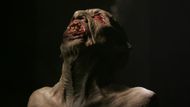
The Wendigo is a creature from Algonquian Native American legends. It is said to be a ghoul born from pure desperation; usually, some poor soul ends up eating human flesh to survive, and next thing you know, they’re a Wendigo. Or sometimes, it’s just an evil spirit possessing someone. It is described as being tall, with skin stretched tight over bones, always craving human flesh.
Now, if you’ve ever checked out Supernatural, they take the Wendigo and elevate the myth for dramatic effect. That show turns it into a wild, forest-dwelling tank, super strong, almost impossible to kill, and creepily good at mimicking voices to trick people. The writers lean into the “every 23 years, someone disappears” thing, and they nail the cannibalism origin story. Plus, they don’t forget the winter; it’s all about hunger and cold and losing your mind.
The woman in white (La Llorona) (Pilot episode)
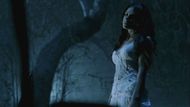
The Woman in White from Supernatural’s first episode is a riff on the “weeping woman” legend you see all over the place. The most famous version is La Llorona, super well-known in Latin America. She’s the OG tragic ghost mom who drowns her own kids because her lover cheated on her, then gets cursed to just haunt rivers and cry forever.
You see this same basic story pop up in other cultures as well. Supernatural upgrades it for TV, of course. Their Woman in White goes after cheating men, which fits the folklore, but with way more spooky vibes.
Croatoan (Season 2)
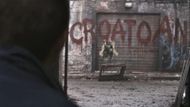
The term “Croatoan” comes straight out of one of America’s oldest unsolved mysteries. The fate of the Roanoke Colony. The true story took place in the late 1500s, when many English settlers just disappeared, and all anyone found was the word “CROATOAN” scratched into a tree. People have been coming up with all kinds of theories, but nobody has cracked the case.
Now, in the show, they elevate the creep factor way up. Croatoan isn’t just some ancient word; it’s a gnarly, demonic virus. So they take a real-life historical incident and flip it into a horror fest.
Bloody Mary (Season 1)
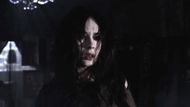
Imagine you’re in a pitch-black bathroom, and someone dares you to whisper "Bloody Mary" into the mirror three times, or maybe thirteen. And, suddenly, you’re supposedly summoning a spirit. This isn’t just a Western thing, either. Tons of cultures have their own spin on the mirror-ghost gig. Usually, it’s got something to do with revenge, guilt, or some secret you really wish you hadn’t stumbled into.
In Supernatural, some friends decide to mess around and call on Bloody Mary, probably thinking it's all a joke. She pops out of the mirror and gouges their eyes. The show runs with the Bloody Mary deal as they mix in all sorts of local versions—sometimes it’s three names, sometimes it’s more, but always with the mirror.
Tulpa (Season 1)
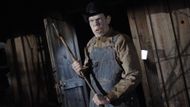
In Tibet, a tulpa is like a thought-creature you create in your head through meditation (or sheer willpower). And if enough people start believing in this thing, it doesn’t just sit there. It can start acting on its own.
These tulpas don’t just pop up out of nowhere, either. Urban legends help fuel public speculation, and every retelling just beefs up the creature’s resume. Basically, the more you believe, the more real it gets. Ranker even notes that the show nailed the Tibetan tulpa myth, right down to the symbols. Out of all the folklore shoutouts in Supernatural, this one’s probably the closest thing to the real deal.
Crossroads Demons (Season 2)
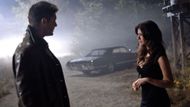
In the south of America, when you get into old hoodoo stories, the crossroads is the magic center. At midnight, you have to sit under the moon and try to cut deals with demons. The price is usually your soul.
You see it again and again—some slick-talking, red-eyed demon pops up, offers you a ten-year joyride, then comes to collect. And let’s not forget those hellhounds and the idea of being chased down by supernatural mutts. Supernatural (the show) grabbed all of this: the ten-year deal, the creepy dogs and the spooky nighttime rituals. They didn’t make this stuff up; it’s folklore with real roots.
Djinn (Season 2)
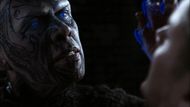
Djinn (also sometimes spelled “jinn”) comes from Arabic lore. Djinn were these unpredictable spirits, who had free will. They are not angels, not demons, just some entities in-between. Sometimes they crash into a human's or animal’s body. Sometimes they grant wishes. Sometimes they just mess with you because they want to.
But in some stories, djinn trap you in dream worlds and suck your blood while you’re zonked out. And don’t think you’re getting that three-wish deal; they twist your wishes, flipping them into nightmares. If you want to take one down, you would need a silver knife, and it has to be dunked in lamb’s blood. The TV show Supernatural actually nails the darker, creepier side of djinn lore way better than the “genie in a lamp” thing. These things are way closer to the original myths: morally gray, kind of terrifying, and always unpredictable.
Shtriga (Season 1 backstory and flashback)
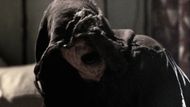
There is an Albanian legend about a witch, Shtriga, who has a thing for slurping up the life out of sleeping kids. What’s wild is, she can straight-up turn into a bug and escape through a window. She is even modeled as invulnerable to weapons made by man or God.
Supernatural digs into this bit of folklore. The family has got some gnarly history tangled up with the Shtriga. It’s not just a monster-of-the-week thing; it hits them personally, right at the core of their family trauma. WhatCulture pointed out that the episode nails the OG legend, right down to the way the Shtriga operates—motives, methods, all that.
Rakshasa (Season 2)

Rakshasas are the monsters out of Hindu epics like the Ramayana, morphing left and right, with extra arms and heads. An especially vivid description from the Ramayana, as cited in MythologyWorldWide: Hanuman enters the city of Lanka, and as he is sneaking around, peeking into houses, the Rakshasas are sleeping in every shape you can imagine. Some of them have just two legs, others have three, and a few have four legs. Some of them had snake heads, some had donkey heads, and some had horse or elephant heads.
Now, jump to Supernatural. The show grabs the Rakshasa idea and runs with it, but it’s more scary demon than deep mythological force. There is a shapeshifting and creepy factor, but all the mythological things are not emphasized.
Shōjō (Season 7)
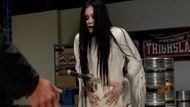
So, shōjō (猩々) are red-haired sea spirits of Japanese myth. They are boozy gremlins, famous for their love of sake and their bright faces. You see them a lot in Noh theater and old folktales, but a lot of their story got borrowed from Chinese legends (the xing-xing) and stagecraft.
Supernatural featured the Shōjō in the seventh season. Here, it’s a pissed-off spirit, summoned by a cursed sake bottle. However, the catch is that only drunk people can see it. So, naturally, Garth, Sam, and Dean have to get hammered just to hunt the thing down. And to finish the job, they need some kind of magic Shinto‑blessed samurai sword.
The show nails the basics—drunkenness, red face, ocean—but it turns the shōjō into a monster-of-the-week, way more terrifying and physical than the old stories ever bothered with.
